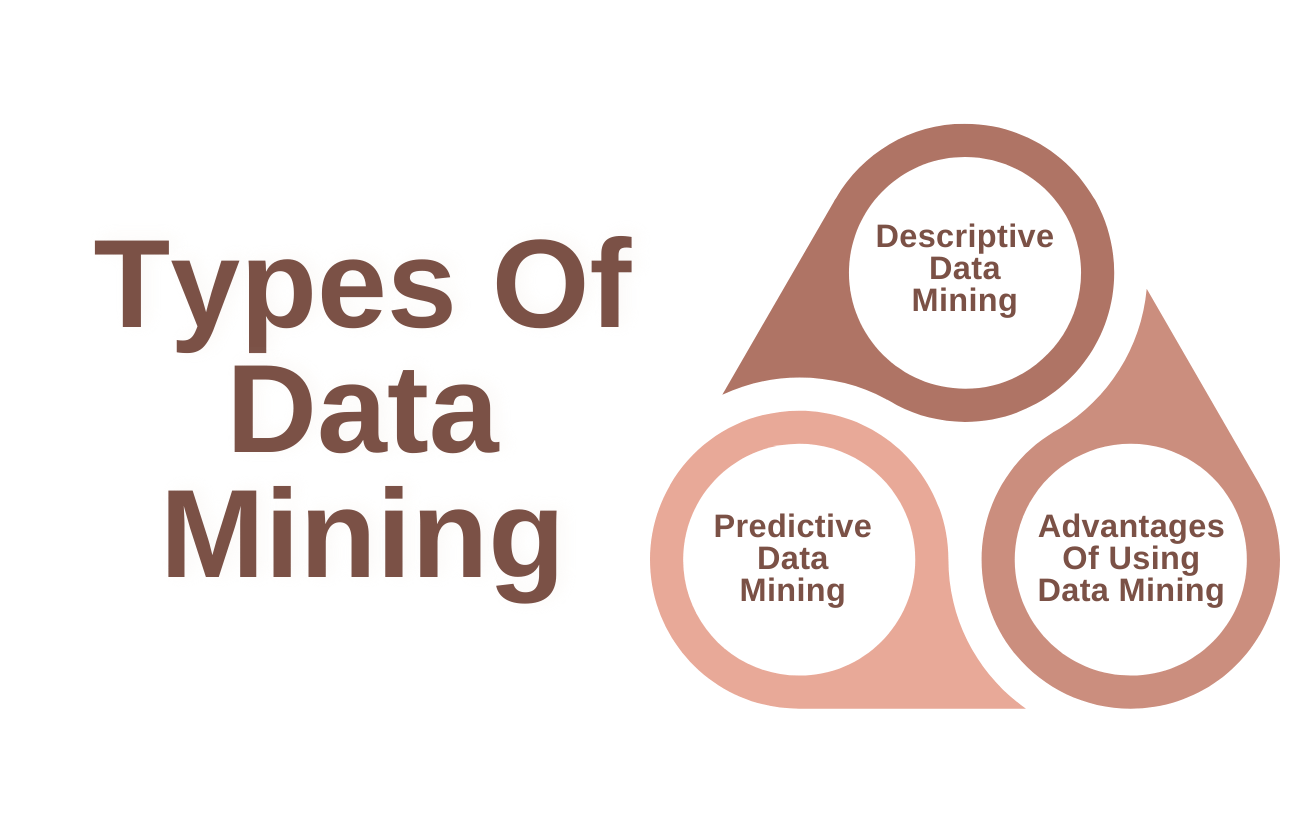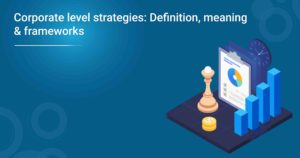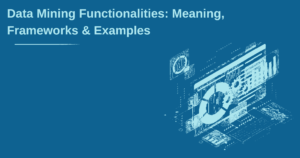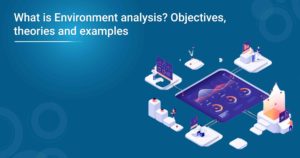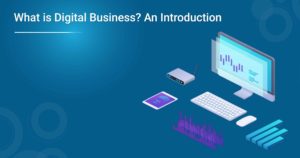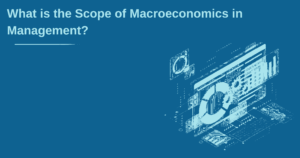The use of data by companies to understand business patterns and predict future occurrences has been on the rise. With the availability of new technologies like machine learning, it has become easy for experts to analyse vast quantities of information to find patterns that will help establishments make better decisions. Data mining is a method that has proven very successful in discovering hidden insights in the available information. It was not possible to use the earlier methods of data exploration. Through this article, we shall understand the process and the various data mining functionalities.
One can learn more about the use and functions of data mining through the Executive Development Programme In General Management offered by reputed institutions. You can learn more about this course on our website. Before we go on to see the various data mining functionalities, we must know the process and why companies are showing keen interest in it.
What Is Data Mining?
Data mining is analysing large volumes of data available in the company’s storage systems or outside to find patterns to help them improve their business. The process uses powerful computers and algorithms to execute statistical analysis of data. This process helps companies to make sense of the scattered data and find correlations between them. It helps these firms find answers to questions that could not be arrived at earlier due to the time it takes to use manual methods. Understanding data mining functionalities is possible only once we understand the process clearly.
The data mining process starts with clearly defining the questions for which the organisation seeks answers. It is very important because the exercise can prove futile unless there is a clear focus on the business outcome. Once experts identify the problem, they start collecting relevant data from various sources. These are pooled in a central data lake or warehouse and prepared for analysis. Companies use various data mining functionalities to arrive at the solution they desire. For the success of this process, companies follow the below six steps.
- Business Understanding – For the project’s success, there must be a clear understanding of the business situation, the current aim of the project and the criteria for success.
- Data Understanding – Companies must identify the data needed for the project and collect them from all available sources.
- Data Preparation – This is a very important step in preparing the data for analysis. The company must ensure that the data is in the correct format, making it ready to solve the issue. At this stage, quality issues like missing or duplicate data are addressed.
- Modelling – Data mining experts identify patterns in the data and apply them to the predictive models they have created.
- Evaluation – The process is evaluated for its effectiveness. The data experts assess whether the model will deliver the desired business outcome. They fine-tune the algorithm at this stage to get the best results.
- Deployment – Data analysts run the analysis and submit the results to the decision-makers for further action.
Types Of Data Mining
Descriptive Data Mining
Descriptive data mining aims to transform raw data into information that can be used for analysis and preparing reports. In this type of data mining, the patterns and similarities in the available information are identified and separated. This method also helps to isolate interesting groupings in the analysed data. This method will help the companies find information about the data like count, average, etc. It also brings out the common features of the data. The experts can find out the general properties of the data present in the datasets.
Predictive Data Mining
Instead of just understanding the patterns, this type of data mining helps to make predictions using past information. It uses the target-prediction capabilities that are acquired through supervised learning. The subsets of data mining techniques that fall under this method are classification, time-series analysis and regression. Using this method, developers can understand the characteristics that are not explicitly mentioned. Companies can use this method to predict sales in the future using present and past data.
Advantages Of Using Data Mining
Companies spend a huge amount of money on this process. It is because they gain a lot of benefits by performing data mining. Before we see the various data mining functionalities, let us see how companies benefit from this process. In a competitive business world, companies need to make the right decisions. It is possible only if the company uses available data to discover insights and incorporate them into the decision-making process quickly. The knowledge of the past and present helps optimise the future.
Data mining helps the company achieve the below objectives
- Increased Revenues
- Understanding customer preferences
- New customer acquisition
- Improving up-selling and cross-selling
- Retaining customers and improving their loyalty
- Increasing the ROI on marketing campaigns
- Preventing fraud by early detection
- Identifying credit risks
- Assessing operational performance
By joining the Executive Development Programme In General Management, you can learn the benefits of using this process in detail. The details of this course are available on our website. Before understanding the data mining functionalities, let us look at examples of how this exercise helps various business areas.
Also Read: Models of Quality Assurance: Definition, Meaning & Frameworks
Examples Of Data Mining
- Marketing
One of the biggest examples of data mining can be seen in a company’s marketing activities. They use it for exploring large datasets to improve market segmentation. Many firms use it to understand the relationship between various parameters like the age, gender and preferences of a customer. It helps to create personalised marketing campaigns. One of the other uses of data mining is to predict the customers who are likely to unsubscribe from a service.
- Retail
The placement of products in a supermarket is very important for improving sales. It is necessary to know to entice customers to purchase products which they may not have planned on buying. For this, it is crucial to place these items where they can attract customers. Data mining helps identify product associations and decide where items must be placed on the shelf and in the aisle. It is possible to use different data mining functionalities to know the offers that customers value the most.
- Banking
Avoiding risks is very important for banks. Data mining helps banks to know financial transactions, card usage, purchase patterns and customer financial data. It helps them identify risky customers and reduce risks. Data mining also enables banks to learn more about customers’ online habits. It enables the banks to customise their marketing messages according to customers’ preferences and get better results.
- Medicine
Medical specialists can make more accurate diagnostics using data mining. They can prescribe better treatment methods when they have all information about the patient, like medical records, treatment patterns and physical examination details. Data mining also helps in providing better healthcare by identifying risks and predicting illness in certain sections of the population. It helps the state make better use of available resources. One can also forecast the length of hospitalisation required using this process.
- Media
Television and radio channels use various data mining functionalities to measure their audience on a real-time basis. They collect and analyse information from channel views, programming and broadcasts as they happen. Another big example of the use of data mining is the personalised recommendations the audience receives based on their preferences. The media industry is also able to give valuable information to advertisers about the likes and dislikes of the audience, which helps them target their potential customers more accurately.
Most Important Data Mining Functionalities

Class Description
This is one of the data mining functionalities that is used to associate data with a class or concept. One of the best examples is the release of the same model of mobile phone in different variants. This helps companies to satisfy the needs of different customer segments. Data characterisation is one of the methods used in the class description. This helps to connect data with certain sets of customers. The other method, called data discrimination, is used to compare the characteristics of two different classes of customers.
Classification
Classification is one of the most important data mining functionalities that uses models to predict the trends in the available data. The spending patterns that are discovered using customers’ internet or mobile banking data are one example of classification. This helps businesses decide the risk of giving a customer a new loan or credit facility. This method uses the “if-then” rule, decision tree, mathematical formulae or neural network to analyse a model. This functionality uses training data to create new instances and compare them with existing ones.
Prediction
Finding missing data in a database is very important for the accuracy of the analysis. Prediction is one of the data mining functionalities that helps the analyst find the missing numeric values. If there is a missing class label, then this function is done using classification. It is very important in business intelligence and is very popular. One of the methods is to predict the missing or unavailable data using prediction analysis. The other method of prediction is to use previously built class models to know the missing class label.
Also Read: What is Quality Assurance Plan? 9 Steps to Create a Great Plan
Association Analysis
This is one of the data mining functionalities that enables the analyst to relate two or more attributes of the data. It provides a way to find the relationship between the data and the rules that keep them together. It is a functionality that finds much use in retail sales. One of the classic examples is the message “customer who bought this also bought….” that we usually see on online platforms. It relates two transactions of similar items and finds out the probability of the same happening again. This helps the companies improve their sales of various items.
Cluster Analysis
This data mining functionality is similar to classification. But in this case, the class label is unknown. This functionality groups item together based on the clustering algorithms. Similar objects are grouped in a cluster. There are vast differences between one cluster and another. It is applied in different fields like machine learning, image processing, pattern recognition and bioinformatics. There are different types of clustering algorithms like K-Mean, Gaussian Mixture and Mean-Shift algorithms. Each of these uses different factors to group objects in data.
Outlier Analysis
Outlier analysis is one of the data mining functionalities that is used to group data that don’t appear under any class. There can be data that has no similarity with the attributes of other classes or general modules. These are called outliers. Such occurrences are considered to be noise or exceptions. Their analysis is termed outlier mining. In many cases, they are discarded as noise. But in some cases, they can provide associations, and that is the reason for identifying them. They are identified using statistical tests that calculate probabilities.
Correlation Analysis
This is another data mining functionality that experts use to calculate the strength of the association of two attributes. It is used to determine how well two numerically measured continuous variables are related to each other. One of the most common examples of such attributes is height and weight. Researchers often use these two variables to find if there is any relationship between them. Correlation analysis refers to various data structures that can be combined with an item set or subsequence.
An in-depth knowledge of the different data mining functionalities can be had at the Executive Development Programme In General Management offered by reputed institutions. You can learn more about this programme on our website.
Summing Up
The use of data mining has increased considerably in the recent past as companies try to gain useful knowledge from the raw data available to them. The development of data warehousing technology and the growth of big data have contributed greatly to this phenomenon. Data mining is interesting because you can get useful information without asking specific questions. It is a predictive process that uses algorithms and statistics to predict future trends. This technology is used heavily in retail and e-commerce companies to understand customer purchase patterns.
More Information:
What is Managerial Economics? Meaning, Fundamentals & Frameworks
What is the Scope of Macroeconomics in Management?






_1672046778.jpg)
